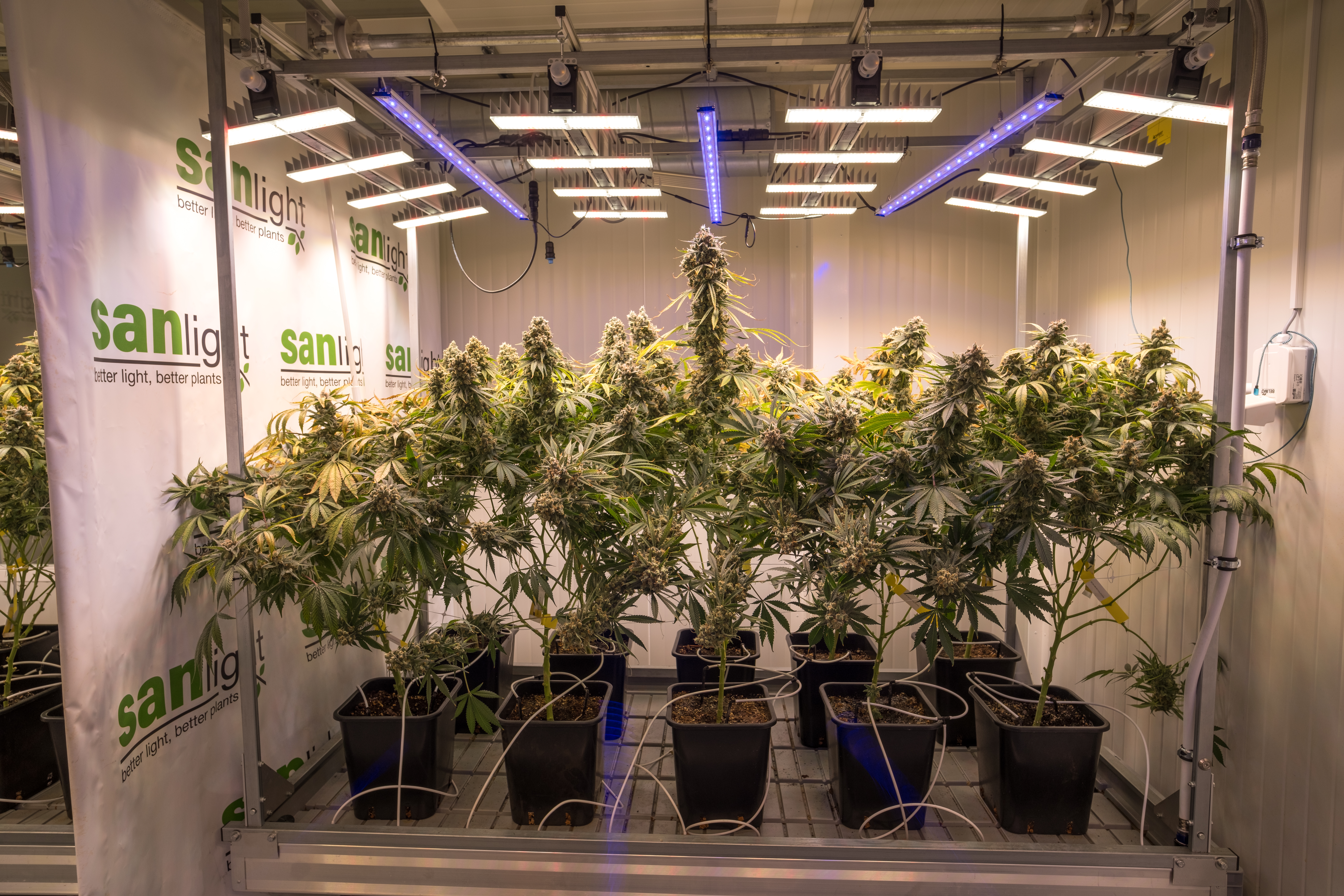
Influence of UV Light on Cannabis – Interim Study
Executive Summary SANlight has conducted an interim trial to investigate whether supplemental UV lighting can enhance the yield and quality of cannabis. The study focused
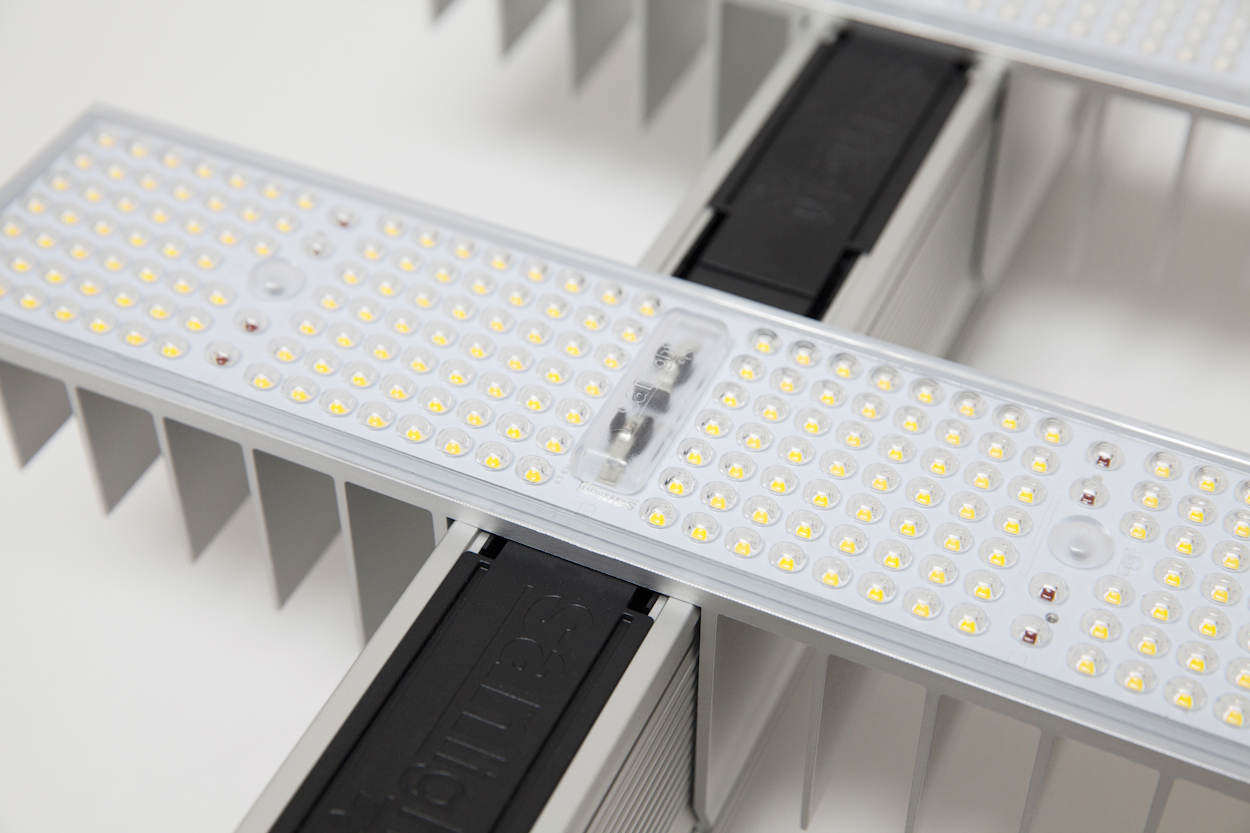
The cultivation of plants produces resin and pollen during the flowering phase, which settles on surfaces over time. In addition, chemicals such as sulfur are used in fertilizer or pest control in plant cultivation. While pollen reduces the light output of LED due to contamination, sulfur attacks the internal reflectors of mid power LED.
Especially Mid Power LED have to be protected from these influences to achieve the specified lifetime. In the following article we would like to show you the different technical possibilities to protect the heart of every LED luminaire.

LEDs without any protection are directly exposed to environmental influences such as moisture and chemicals. These factors cause the LED to age rapidly. The LED’s actual service life is significantly longer, but an unprotected LED can lose more than 10% of its light output within one year. Since the soft silicone of the LED is virtually impossible to clean, this diluted loss is irreversible. Furthermore, sulfur and other chemicals diffuse through the silicone encapsulation of the LED. Once sulfur reaches the core of the LED, it destroys the LED’s internal reflector (see figure on the left). As a result, the light output is significantly reduced.
.
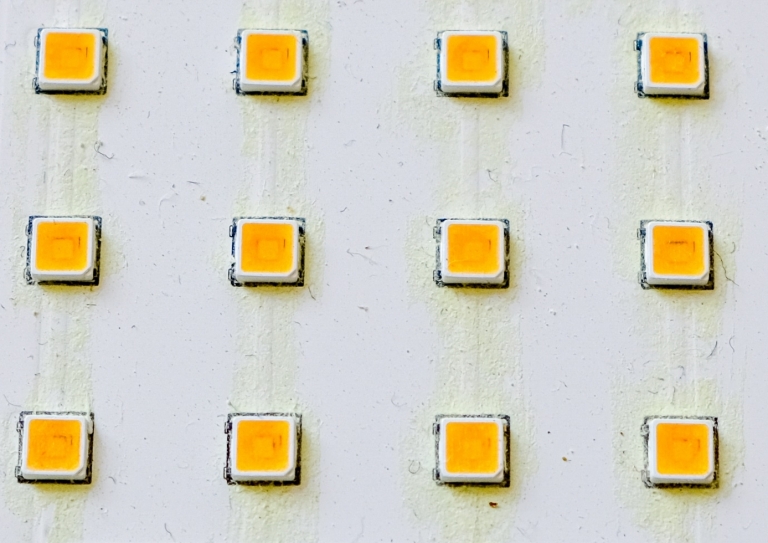
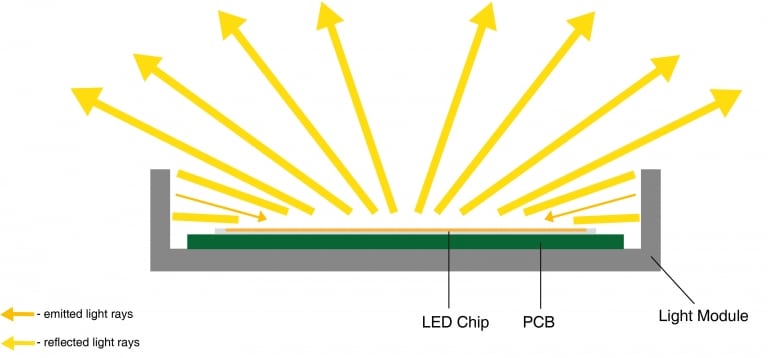
Some manufacturers protect their LED with silicone or polyurethane coatings. This should protect the LED and its contacts sufficiently against splash water and humidity. However, these coatings are difficult to clean, just like the LED. The same applies to the diffusion of sulfur through the silicone coating. This leads to LED aging at approximately the same rate as with unprotected LED. Due to the low layer thickness, little light is lost through the coating itself.
.
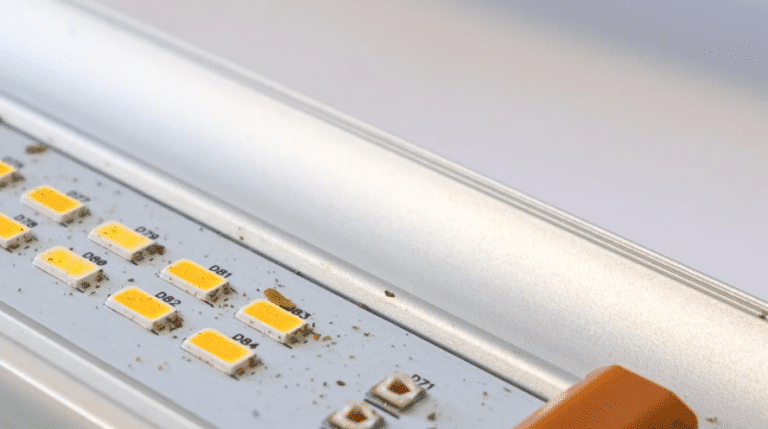
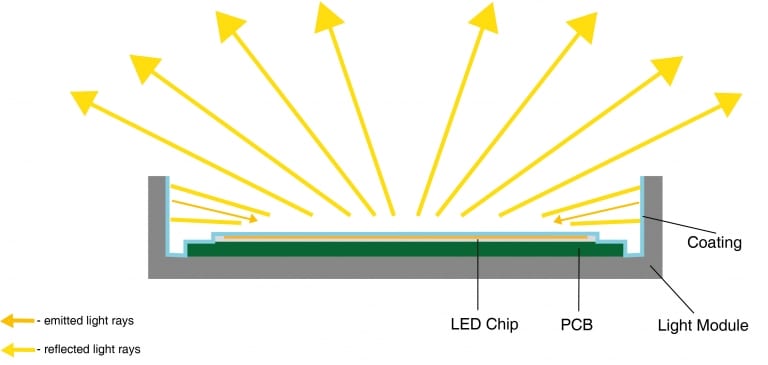
Often, a flat, translucent cover is placed over the LED to protect it. The cover can be screwed, clipped or glued. Materials such as PMMA, PC or glass are used here. Depending on the material used, the losses due to transmission and total reflection vary. Coated glass has the best performance with approx. 1% light loss, but is heavy and very cost-intensive. Polycarbonate causes up to 12% light loss from the LED to the light emission point. In addition, the material yellows and also reduces the output power in the medium term. Acrylic glass (PMMA) is characterized by less light loss (approx. 8%) and significantly better long-term stability. In summary, flat two-dimensional covers incur losses due to transmission and total reflection. Therefore, the efficiency in the data sheet of such luminaires is usually worse than that of unprotected LEDs. Nevertheless, a longer lifetime can be assumed than for unprotected or coated LEDs.
Provided that the covers used actually seal the LED, they offer sufficient protection against moisture and chemicals. However, the combination of aluminum heat sink and glass or plastic covers should be viewed critically. Especially with longer (>500mm) linear luminaires (light bars), there are often problems with the tightness of the encapsulation due to the different linear expansions of the material combinations.
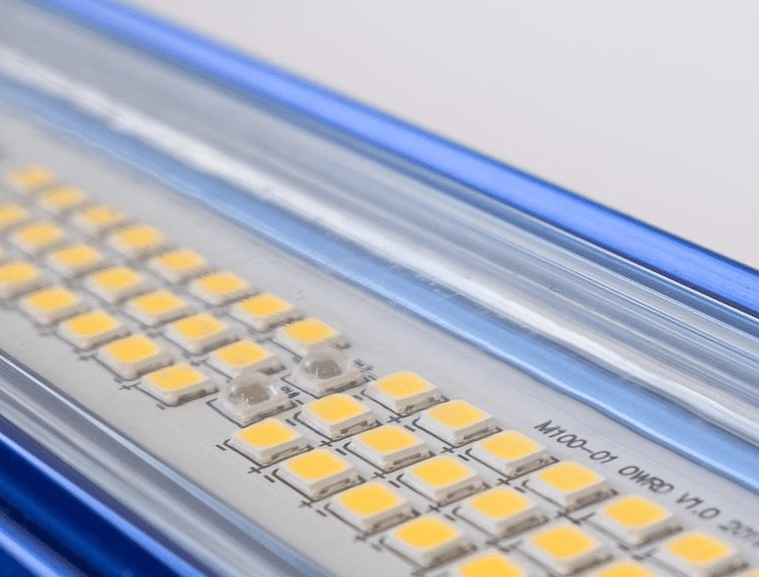
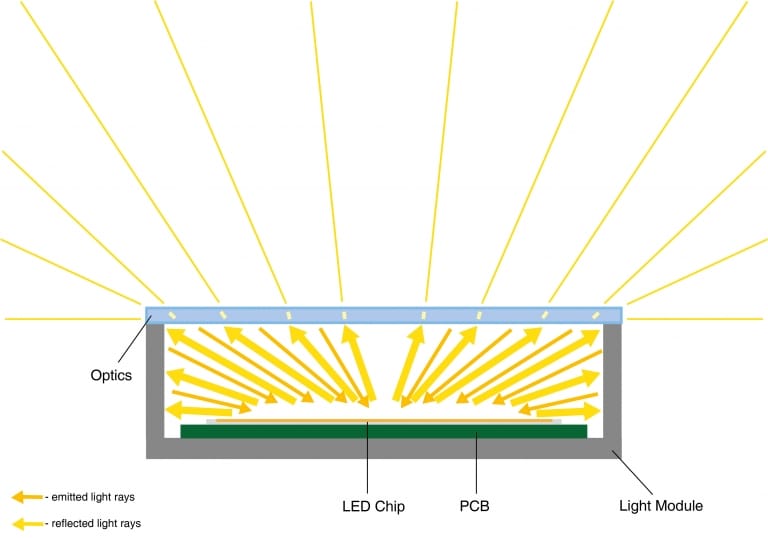
All current SANlight models are equipped with a secondary optic made of PMMA. In the EVO-Series, for example, this optic is bonded to the heat sink and the LED is thus completely encapsulated and optimally protected from external influences. The selected high tech material causes lowest transmission losses. Losses caused by total reflection are reduced to an absolute minimum by the three-dimensional design of the light entry surface. Overall, the SANlight secondary optics cause only 4% light losses. Given the sophisticated design of the optics, stray light from the LED is captured and directed to the plants. In addition, the light control distributes the light efficiently and homogeneously over the cultivation area. In general, the generated light losses caused by the optics are completely compensated by the capture of stray light as well as the perfect light control.
In practice, this means that although our data sheet does not give the best efficiency values, more light actually reaches the plants than with apparently (according to the data sheet) more efficient luminaires. The light output remains constant over years and given the possibility to clean the optics, the specified lifetime (LM90) is achieved.

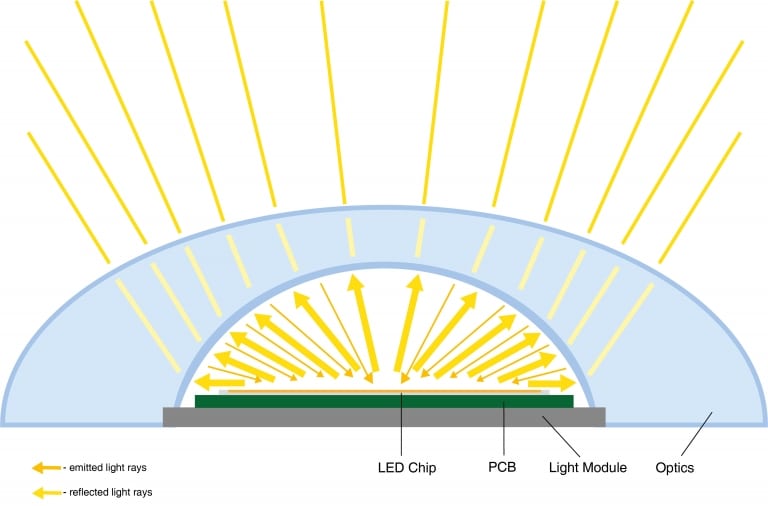

Executive Summary SANlight has conducted an interim trial to investigate whether supplemental UV lighting can enhance the yield and quality of cannabis. The study focused

We came, we saw, we lit it up – MJBizCon 2024 was an absolute blast, and we couldn’t be prouder to have been there as

In a radiant whirlwind of vibrant energy and strategic partnerships, we, SANlight, the pioneering creators of LED grow lights, embarked on an electrifying journey to
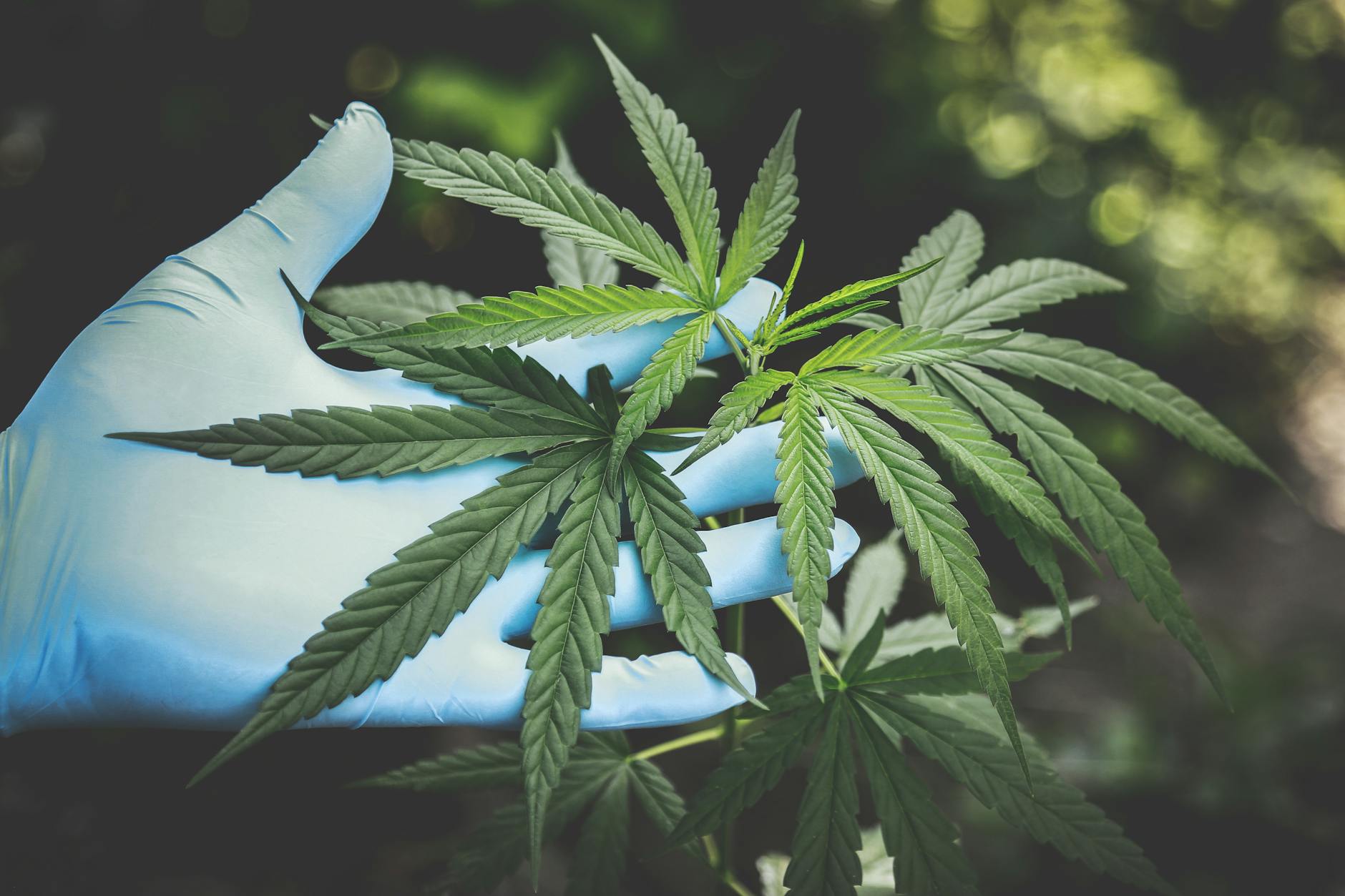
Regarding efficiency in an indoor grow environment, the power consumption of the HVAC system and the Grow Lights are the biggest energy consumption factors. In

© Copyright [year] SANlight Americas LLC | Terms and Conditions | Privacy Policy